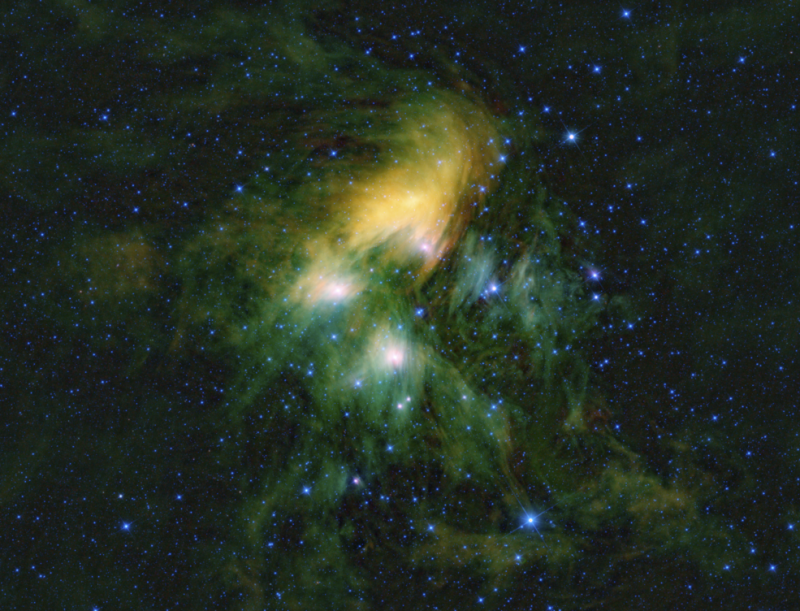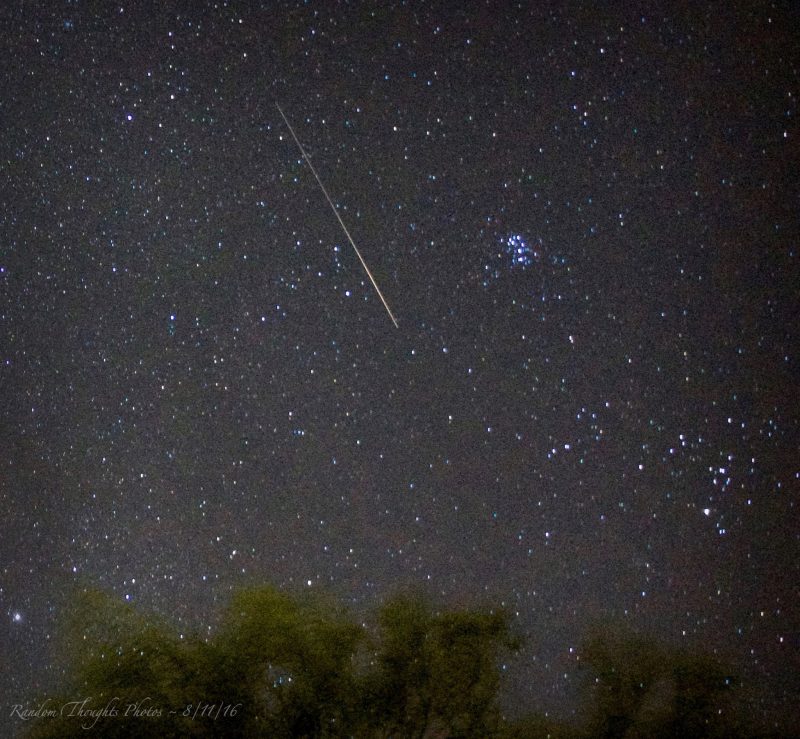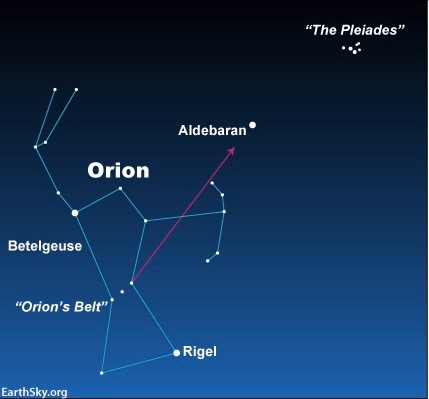
You probably know the Kepler spacecraft as the famous planet-hunter that’s discovered more than half of all known exoplanets. But Kepler is in an extended mission now, called K2. NASA just announced a study (August 12, 2016) in which the craft was used for a wholly different purpose: to capture rotation or spin rates of stars in the Pleiades star cluster, also known as the Seven Sisters.
Have you seen the Pleiades? The cluster is easily visible to the eye from all parts of Earth, appearing as a tiny, misty dipper ascending in the east before dawn on these August mornings. The stars in the Pleiades are relatively young, only about 125 million years old in contrast to four-and-a-half billion years for our sun. All were born together relatively recently from a single cloud of gas and dust in space, and the stars still move together through space. Plus the cluster is relatively nearby at only 445 light-years away.

All these reasons explain why the Pleiades cluster is a good laboratory for studies of the way stars form and evolve, and how planets might evolve around them.
Luisa Rebull, a research scientist at the Infrared Processing and Analysis Center at Caltech in Pasadena, California, is the lead author of two new papers and a co-author on a third paper about the new findings, all being published in the Astronomical Journal. She explained:
We hope that by comparing our results to other star clusters, we will learn more about the relationship between a star’s mass, its age, and even the history of its solar system.
The astronomers’ statement explained that the Pleiades stars have reached stellar young adulthood, and that they’re likely spinning the fastest they ever will.
Rebull and colleagues used Kepler to measure the rotation rates of more than 750 stars in the Pleiades over a period of 72 days. Their measurements included about 500 of the lowest-mass, tiniest, and dimmest cluster members, whose rotations could not previously be detected from ground-based instruments. Kepler measured the rotations of these stars by picking up small changes in brightness from them, caused by starspots (analogous to sunspots on our sun). As stars rotate, their starspots come in and out of Kepler’s view. The astronomers’ statement explained:
During its observations of the Pleiades, a clear pattern emerged in the data: More massive stars tended to rotate slowly, while less massive stars tended to rotate rapidly.
The big-and-slow stars’ periods ranged from one to as many as 11 Earth-days.
Many low-mass stars, however, took less than a day to complete a pirouette. (For comparison, our sedate sun revolves fully just once every 26 days.) The population of slow-rotating stars includes some ranging from a bit larger, hotter and more massive than our sun, down to other stars that are somewhat smaller, cooler and less massive. On the far end, the fast-rotating, fleet-footed, lowest-mass stars possess as little as a tenth of our sun’s mass.
Rebel and colleagues believe the main source of these differing spin rates is the internal structure of the stars. Their statement said:
Larger stars have a huge core enveloped in a thin layer of stellar material undergoing a process called convection, familiar to us from the circular motion of boiling water. Small stars, on the other hand, consist almost entirely of convective, roiling regions.
As stars mature, the braking mechanism from magnetic fields more easily slows the spin rate of the thin, outermost layer of big stars than the comparatively thick, turbulent bulk of small stars.
Rebull and colleagues are now analyzing K2 mission data from an older star cluster, Praesepe, popularly known as the Beehive Cluster.

Bottom line: Astronomers used the famous planet-hunting Kepler spacecraft to measure the spin rates of stars in the Pleiades star cluster, also known as the Seven Sisters.











